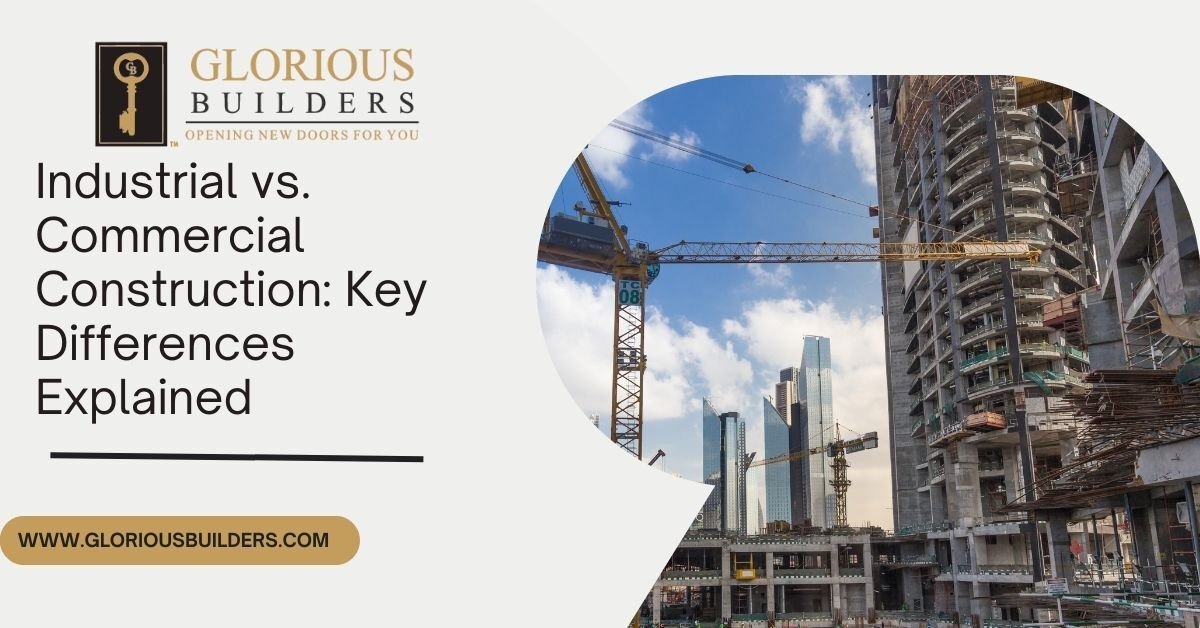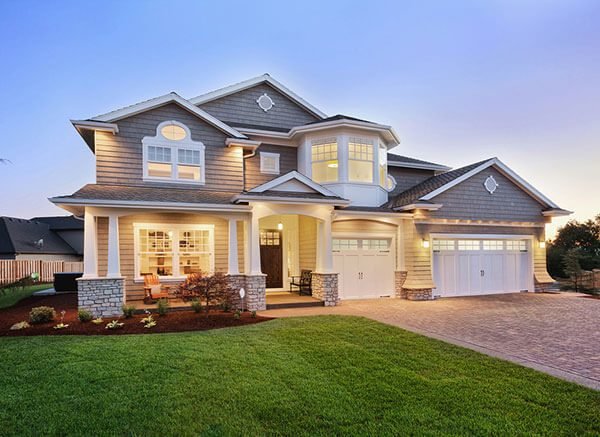Industrial vs. Commercial Construction: Key Differences Explained
When it comes to construction, different sectors have distinct requirements and purposes. Two prominent sectors are industrial and commercial construction. While both involve the development of structures, understanding their fundamental differences is crucial. This article will explore the contrasting aspects of industrial and commercial building and shed light on their unique characteristics.
Industrial and commercial construction are two distinct sectors within the construction industry, each serving different purposes and exhibiting key differences. Industrial construction primarily focuses on the development of facilities that cater to large-scale production and manufacturing processes. These structures are specifically designed to accommodate heavy machinery and industrial equipment, ensuring efficient and safe operations. On the other hand, commercial construction centers around creating buildings intended for businesses and retail purposes. These include office complexes, shopping malls, restaurants, and hotels, which prioritize aesthetics, customer experience, and functionality. While both sectors adhere to construction standards and regulations, industrial projects emphasize structural strength and durability to withstand heavy usage, whereas commercial projects prioritize design elements and amenities to attract customers and clients. Understanding these key differences is crucial for stakeholders in the construction industry, as it enables them to tailor their approach to meet the specific demands of each sector effectively.
What is commercial vs. industrial engineering?
Commercial engineering pertains to designing and constructing buildings used for business and commerce. It encompasses structures like offices, retail spaces, restaurants, and hotels. On the other hand, industrial engineering focuses on designing and constructing buildings that facilitate manufacturing, production, or storage activities. Industrial structures may include factories, warehouses, distribution centres, and processing plants.
Commercial Engineering:
- Focuses on the design and construction of buildings for business and commerce.
- Includes structures such as offices, retail spaces, restaurants, and hotels.
- Aimed at creating functional and aesthetically pleasing spaces for commercial activities.
Industrial Engineering:
- Concentrates on designing and constructing buildings for manufacturing, production, or storage purposes.
- Involves structures like factories, warehouses, distribution centres, and processing plants.
- Focuses on creating efficient and specialised spaces to support industrial operations.
Difference between residential and industrial buildings:
Industrial vs. Commercial Construction: Key Differences Explained
Industrial and commercial construction are two distinct sectors with specific requirements and purposes. Understanding the differences between them is crucial for stakeholders in the construction industry. This article will delve into the contrasting aspects of residential and industrial buildings, shedding light on their unique characteristics.
Purpose and Function: Residential Buildings:
- Purpose: Residential buildings are designed to provide living spaces for individuals and families.
- Function: These structures cater to the needs of homeowners and prioritise comfort, aesthetics, and functionality.
- Examples: Houses, apartments, condominiums, townhouses, and other dwellings fall under residential construction.
Industrial Buildings:
- Purpose: Industrial buildings serve commercial or industrial purposes rather than residential ones.
- Function: They are designed to accommodate machinery, equipment, and specialised operations integral to industrial processes.
- Examples: Factories, warehouses, distribution centres, processing plants, and manufacturing facilities are typical examples of industrial construction.
Design and Layout: Residential Buildings:
- Design Considerations: Residential buildings focus on creating comfortable living spaces that adhere to the needs and preferences of homeowners.
- Layout: The layout typically includes bedrooms, bathrooms, kitchens, living areas, and recreational rooms.
- Aesthetics: Residential designs prioritise aesthetics, personalization, and creating a welcoming ambiance for residents.
Industrial Buildings:
- Design Considerations: Industrial buildings prioritise functionality, efficiency, and safety to support industrial processes and operations.
- Layout: The layout is tailored to accommodate machinery, assembly lines, storage areas, and logistics operations.
- Practicality: The emphasis is on optimising space, workflow, and logistics to enhance productivity within the facility.
Structural Considerations: Residential Buildings:
- Structural Requirements: Residential buildings prioritise comfort, safety, and aesthetics.
- Materials: Construction materials focus on providing insulation, noise reduction, and visual appeal.
- Features: Attention is given to architectural detailing, interior finishes, and landscaping.
Industrial Buildings:
- Structural Requirements: Industrial buildings emphasise durability, load-bearing capacity, and safety regulations.
- Materials: Construction materials are chosen for their strength, ability to withstand heavy loads, and resistance to specific industrial processes.
- Features: Industrial buildings may incorporate high ceilings, specialised flooring, reinforced structures, and efficient ventilation systems.
Regulatory and Safety Considerations: Residential Buildings:
- Regulatory Compliance: Residential construction must adhere to building codes and regulations on safety, structural integrity, and energy efficiency.
- Security: The emphasis is on creating safe living environments for residents, ensuring fire safety measures, and proper electrical installations.
Industrial Buildings:
- Regulatory Compliance: Industrial construction must comply with specific regulations related to industrial processes, machinery, fire safety, and environmental considerations.
- Safety: Industrial buildings prioritise worker safety, emergency exits, fire suppression systems, and appropriate ventilation for hazardous materials.
Structures emphasised in industrial construction:
Industrial construction significantly emphasises creating buildings supporting heavy machinery, large-scale production, and specialised operations. These structures require robust foundations, high ceilings, spacious floor plans, and sufficient load-bearing capacity. Industrial construction also considers factors like safety regulations, ventilation systems, and the efficient flow of materials within the facility.
Structures emphasized in industrial construction are designed to meet the unique demands of heavy machinery, large-scale production, and specialized operations. Here is a more detailed explanation of the critical considerations in industrial construction:
Robust Foundations:
Industrial buildings require sturdy foundations capable of supporting heavy machinery and equipment. The foundation must be designed to distribute the weight of the machinery evenly, ensuring stability and preventing structural issues.
High Ceilings:
Industrial construction often incorporates high ceilings to accommodate tall equipment, overhead cranes, or vertical storage systems. The extra vertical space allows for efficient movement of materials and machinery within the facility.
Spacious Floor Plans:
Industrial buildings typically feature spacious floor plans for large-scale production lines, assembly areas, or storage requirements. The layout is carefully designed to optimize workflow, allowing for smooth material handling and efficient operations.
Load-Bearing Capacity:
Due to the heavy equipment and machinery involved, industrial buildings must possess sufficient load-bearing capacity. Structural components, such as beams, columns, and walls, are engineered to withstand the weight and stress imposed by the machinery and equipment.
Safety Regulations:
Industrial construction considers various safety regulations specific to the industry and the processes involved. Safety considerations may include fire safety measures, emergency exits, sprinkler systems, and proper ventilation to handle potentially hazardous substances or fumes.
Ventilation Systems:
Ventilation plays a crucial role in industrial buildings, as it ensures fresh air circulation and helps control temperature, humidity, and airborne pollutants. Proper ventilation systems are essential for maintaining a healthy and comfortable working environment and complying with safety regulations.
Efficient Material Flow:
Industrial construction also focuses on designing the facility to optimize the flow of materials and goods. This includes strategically placed access points, clear pathways, and efficient logistics systems to minimize bottlenecks and streamline operations.
Defining an industrial building:
An industrial building is a structure specifically designed and constructed for industrial activities. It is a dedicated space for manufacturing operations, production lines, storage facilities, or assembly areas. Industrial buildings are characterized by their functional layouts, specialized infrastructure, and equipment requirements. These structures are tailored to meet the unique needs of their industry and ensure optimal productivity.
An industrial building is a purpose-built structure designed and constructed to accommodate various industrial activities. It is a dedicated space for manufacturing operations, production lines, storage facilities, or assembly areas. Industrial buildings are characterized by their functional layouts, specialized infrastructure, and equipment requirements, all tailored to meet the unique needs of their industry.
Functional Layouts:
Industrial buildings are designed with efficient workflows and processes in mind. The layout is carefully planned to optimize the facility’s movement of materials, equipment, and personnel. This includes arranging production areas, storage spaces, loading docks, and utility zones to ensure smooth operations and minimize logistical challenges.
Specialized Infrastructure:
Industrial buildings often incorporate specialized infrastructure to support specific industrial activities. This can include reinforced flooring capable of withstanding heavy machinery, high-capacity electrical systems to power industrial equipment, and technical ventilation systems to control air quality in manufacturing areas.
Equipment Requirements:
Industrial buildings have the necessary infrastructure to support the machinery and equipment used in industrial processes. This can involve the installation of overhead cranes, conveyor systems, or customized machinery layouts to facilitate the movement and handling of materials during production.
Industry-Specific Considerations:
Industrial buildings are designed to meet the unique requirements of different industries. For example, a food processing facility may require specific sanitary measures, while a warehouse for automotive parts may require high-security features. These buildings are customized to comply with industry regulations and standards, ensuring that the facility meets the specific needs of the industry it serves.
Optimal Productivity:
The primary goal of an industrial building is to create an environment that maximizes productivity. This includes factors such as efficient space utilization, accessibility of equipment and materials, and the implementation of safety measures to protect workers and minimize downtime.
Conclusion:
While industrial and commercial construction may share some similarities, their differences lie in their purpose, design, and functionality. Commercial building caters to businesses and commerce, while industrial construction focuses on manufacturing, production, and storage. Understanding these distinctions is crucial when embarking on a construction project in either sector. By recognizing the specific requirements of each industry, stakeholders can plan and execute construction projects effectively, ensuring the successful realization of their goals.
In summary, industrial and commercial construction are distinct sectors with their unique characteristics and considerations. By comprehending the differences between these two sectors, stakeholders can make informed decisions when initiating construction projects in either domain.








